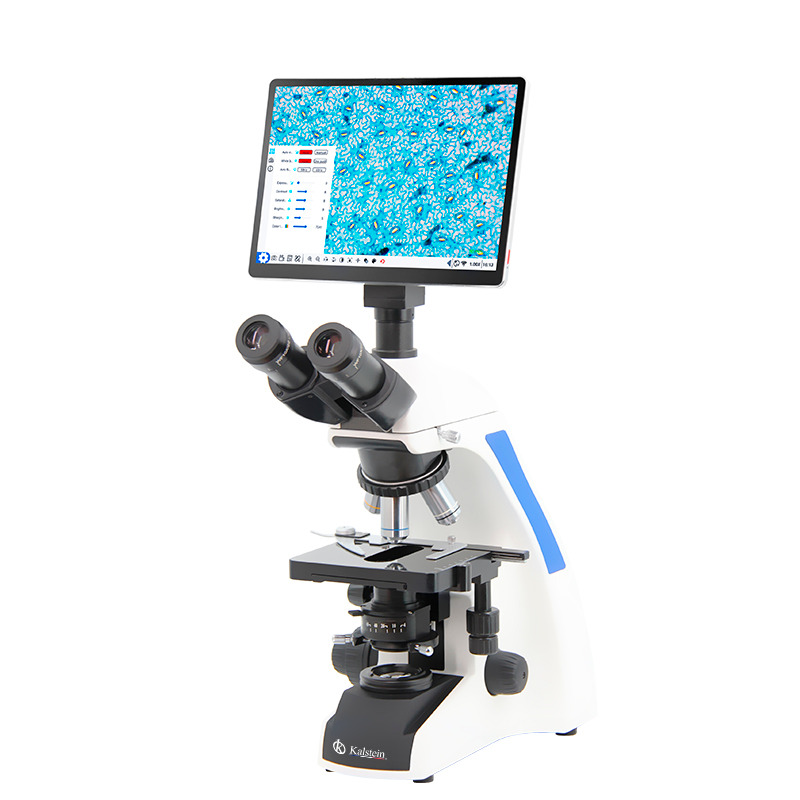In essence, microscopes are scientific instruments designed with the ability to magnify and detail beyond what the human eye can see. The first microscope, developed in the 17th century, was a simple single-lens instrument. Today, they have diversified and become incredibly advanced, including atomic force microscopes, tunnel scanning microscopes, and transmission electron microscopes.
The design of a microscope varies depending on its purpose, but all share three essential components: the light source, lenses, and support. The most modern microscopes incorporate an optimized optical design that provides high-resolution images, a direct result of the improved performance of lenses and light sources.
If you’re seeking a blend of innovation and quality, you’ve come to the right place. At https://kalstein.de/category-product/laboratory-line/microscopes/ we offer you the luxury to explore our exclusive catalog of laboratory equipment. We manufacture each piece of equipment with a level of excellence. Our intuitive and agile online shopping channels are designed for your convenience, ensuring the friendliest prices. Don’t hesitate any longer, we bring science to life, it’s time to become part of our community. https://kalstein.de/
Accelerating Improved Clinical Outcomes with Their Performance
A microscope’s performance, particularly in healthcare, can be measured by its ability to provide improved clinical results. Modern microscopes are capable of detecting details as small as individual cells, viruses, and even molecules. This has allowed a significant advance in areas such as microbiology, cellular biology, and medicine.
Optical and electron microscopes have changed the way medical diagnoses are made, making them more accurate and less invasive. The details seen through a microscope can form a clear image of a disease or condition and give the doctor a better-informed view in formulating an accurate diagnosis.
Expanding Diagnostic Precision and Scientific Discovery
The use of microscopes in medical diagnosis has greatly increased precision and has allowed for early disease detection. Through detailed study of cellular samples, doctors can identify previously undetectable conditions and provide more specific treatment.
Microscopes’ ability to examine the world at a microscopic level has not only changed medicine but advanced science as well. Visualizing molecular and cellular structures has led to the discovery of new materials, comprehending the underlying mechanisms of diseases, and advancing biotechnology.
Various Microscopes: Light, Electrons, and Atomic Force
Light microscopes, which use light to illuminate the sample and glass objectives to magnify the image, are probably the most well-known. However, advancements in technology have led to the development of electron microscopes, which use an electron beam instead of light to create a detailed image.
Atomic force microscopes, on the other hand, can capture images at the atomic level and are valuable in nanotechnology. This type of microscope doesn’t rely on light or electrons to produce an image. Instead, it uses an extremely small probe that moves over the sample’s surface.
Innovative Solutions in Microscope Design
Innovations in microscope design have provided greater flexibility and convenience. One of these advancements is the digital microscope, which uses a digital camera instead of an eyepiece, allowing users to view images directly on a computer screen or save them for further analysis.
Portable and foldable microscopes, on the other hand, have revolutionized the use of microscopes beyond the lab. These lightweight, compact devices are ideal for fieldwork, allowing data collection anywhere.
The Future of Microscopes
With constant innovation and development, microscopes will continue to play a vital role in diverse fields, especially in medicine and scientific research. Future microscopes could feature more advanced capabilities, such as the ability to visualize in three dimensions or to capture moving images of subcellular processes.
Ultimately, the story of microscopes is a story of increased knowledge. They have revolutionized our understanding of the world, and without a doubt, will continue to do so as we keep advancing and exploring the depths of the microcosm.

